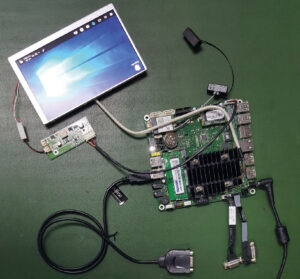 Impact Components offers buyers an outline for identifying the right product and supplier for display applications.
Impact Components offers buyers an outline for identifying the right product and supplier for display applications.
First, depending on the application, identify the display type: LCD or OLED. Due to how mature the technology is, liquid crystal displays are the standard for applications such as medical, automation, military, automotive, avionics, digital signage and consumer use. Organic LED displays—boasting high contrast, true-to-life colors and low power consumption—are popular for professional video industry and consumer applications from mobile phones to TVs.
OLEDs do have drawbacks, though. Even using the latest technology, OLEDs suffer short longevity (MTBF to half brightness) and can be subject to burn-in from static images. There are also size limitations. If an application dictates high dynamic range, high color gamut and doesn’t need to operate 24/7, an alternative to OLED may be local dimming backlight technology for LCDs with a full array of electronically controlled mini-LEDs.
Second, set your budget in advance. Conventional LCDs are least expensive, OLEDs are more expensive per size vs LCDs and full array local dimming LCDs can get expensive quickly, depending on factors like brightness and color gamut. Setting an advanced budget helps identify the product ranges to work within, regardless of specification.
Third, physical dimensions. Non-traditional sizes and resolutions are here to stay and available as OTS solutions. If an application requires something that doesn’t fit into the standard 16:9, 16:10 or 4:3 aspect ratios, don’t be afraid to ask. There could be a pre-existing design or something similar enough to work in the space. Identifying the outside and active area dimensions ahead of time, will allow you to pursue these or semi-custom options.
Fourth, identify the ability to interface with the display. Knowing if a video conversion board, VGA, HDMI or DP to LVDS, TTL or MIPI is required is an important consideration. Along with the video signal, how is the end user interfacing the display? Is a touch screen needed and will the user be wearing gloves or working with the product in a specific environment? Understanding the supplier’s integration capabilities is also important. Can they offer a complete solution or will they supply individual components which must be mounted to an enclosure?
Fifth, identify the operational environment. Is the display going to be exposed to direct sunlight, dust and water? What are the temperature extremes? LCD technologies can operate in extreme environments with wide temperature ranges. Customizations can create rugged, sunlight readable solutions that can operate in just about any environment on earth. OLEDs are not meant for extreme environments and generally don’t do well when viewed outdoors. A display specialist should understand these requirements and help customize a solution for specialized applications.
Lastly, consider availability. Current market conditions may have a stronger influence on the display you choose due to product shortages.
